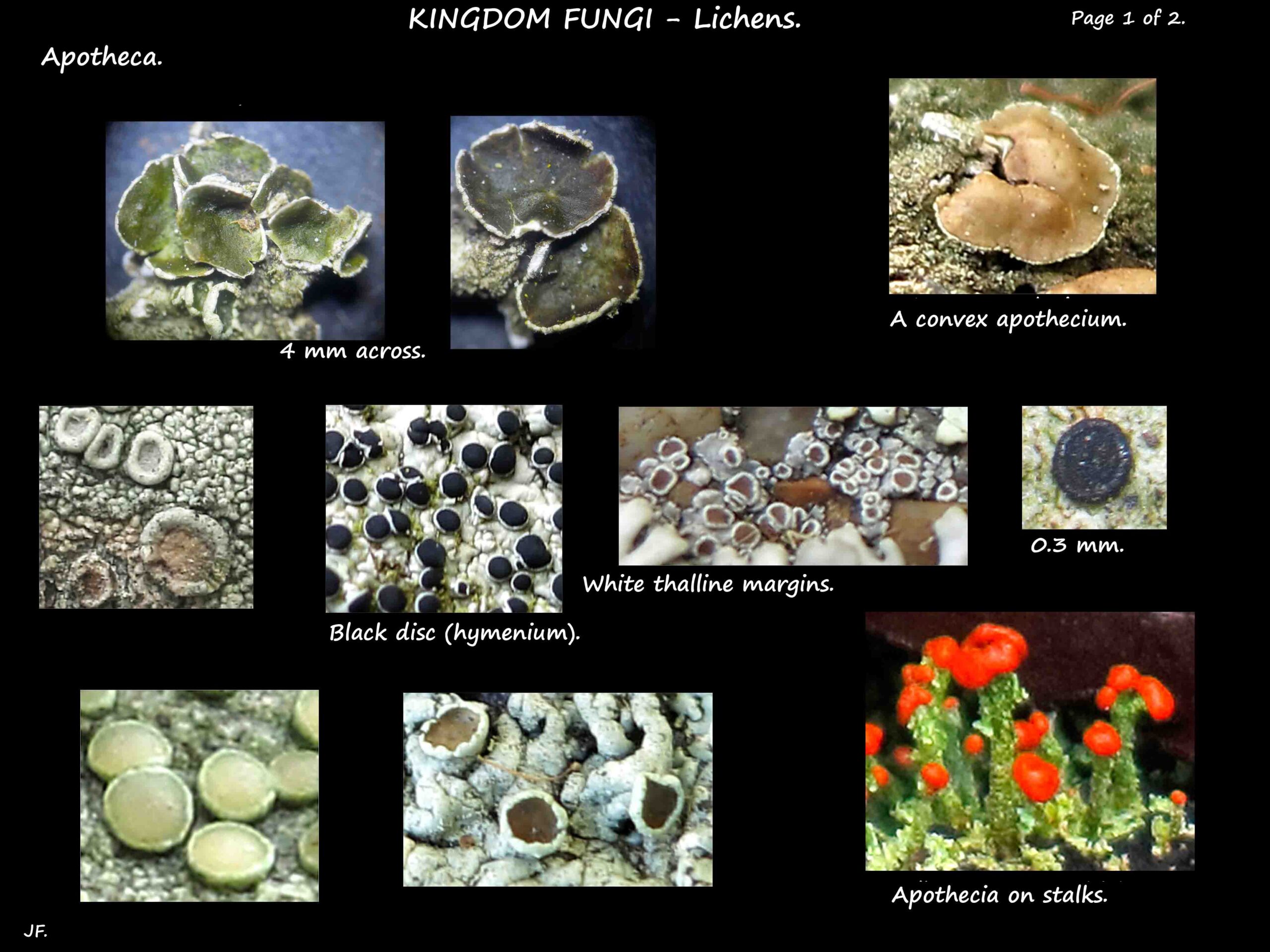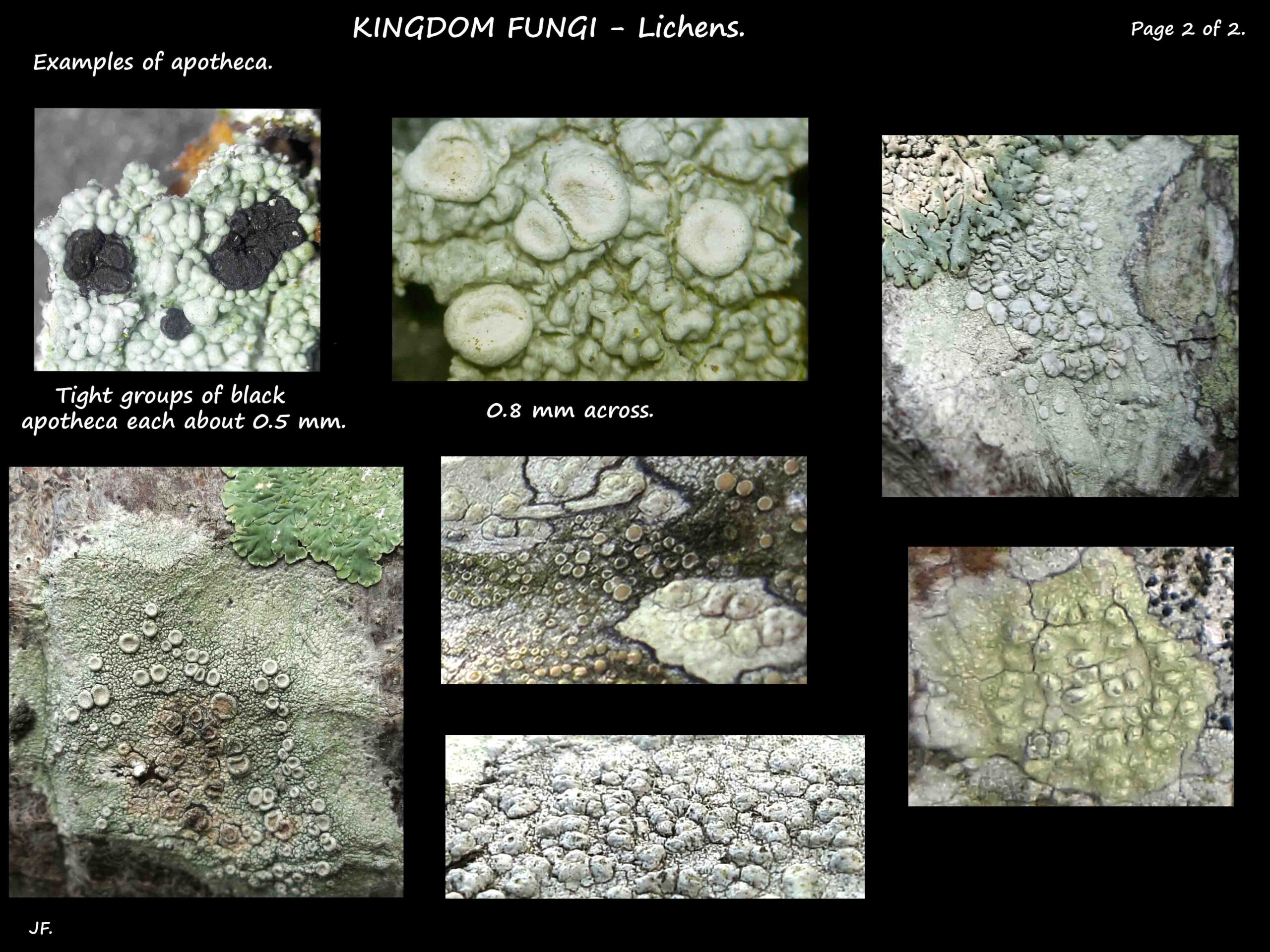Sexual reproduction in lichens.
Spores are formed by the fungal component and develop into a new fungus which must then come
in contact with a photobiont to form another lichen.
In the ascolichens, (where the fungus is an ascomycete) spores are produced within the microscopic asci
lining the fruit bodies.
The common fruit body forms are:
Apotheca.
Typically cup or disc-like but sometimes convex and with the hymenium exposed when mature.
The hymenium has the spore-bearing asci.
They are 1 to 20 mm or more across and variously coloured.
Some apotheca, lirellae, are long and narrow and may branch – seen in the graphid lichens.
Most sit on the surface but some are in the thallus and others are on simple or trumpet-like stalks from
1 mm to a few cms in length.
If the stalks are composed of generative tissue the whole structures, fruit bodies, are called podetia.
If the stalks are of vegetative hyphae the structures are pseudopodetia.
Apotheca usually persist long after the spores have dispersed but some break down leaving a powdery mass of spores.
The layers of an apothecium.
Some layers may be absent, they may only be present at some stage or be overgrown.
Microscopy is sometimes necessary to define them.
The epihymenium is the layer on top of the asci in the hymenium. It is often pigmented.
The hypothecium is a layer of fungal tissue, often pigmented, outside the hymenium.
It is commonly a reddish-brown but may be pale or yellowish.
The exciple is the tissue external to the hymenium and, when present, the hypothecium.
It may be visible as a rim around the disc.
The proper exciple is apothecal tissue with no photobiont cells. This is a lecideine apothecium.
The layer is usually narrow and the same colour as the disc but may be thick or a different colour.
The thalline exciple or thallus margin is composed of thallus tissue with both fungal and photobiont components
so is the same colour as the rest of the thallus.
This is a lecanorine apothecium as found in the genus Lecanora.
Being thallus tissue it may have soredia on it.
The proper and thalline exciple may be present but not visible macroscopically due to overgrowth by the expanding disc.
Peritheca.
These are flask-like, about 1 mm across and usually black.
They lie in the thallus and disperse spores through an apical hole or ostiole visible on the surface like a small pimple.
In the basidiolichens, of which there are relatively few, the spores are produced on microscopic club-like basidia.
(More examples of peritheca are seen under Fungi > Ascomycetes.)
J.F.



